Creating something yourself somehow makes it more satisfying. Or is it just us who think homegrown tomatoes taste twice as good as the ones from the supermarket? Probably not. There’s an ancient human truth hidden here: self-made things simply make us happier. And since Germany now allows individuals to grow up to three cannabis plants, the joy of nurturing a tiny seed into a thriving plant is no longer reserved for commercial growers. As CBD seeds with high cannabidiol content grow in popularity, this article will guide you step-by-step through the process of successfully planting CBD seeds, what to watch for during germination, and the best tips for harvesting healthy plants.
INTRODUCTION: WHAT ARE CBD SEEDS AND WHY ARE THEY SO POPULAR?
CBD seeds are seeds from cannabis plants that have been specifically bred to produce a high content of cannabidiol (CBD). CBD is one of the main cannabinoids in cannabis and offers many potential health benefits without the psychoactive effects associated with THC (tetrahydrocannabinol). In contrast to typical cannabis strains, which are often known for their high THC content and intoxicating effects, CBD-rich seeds are bred from varieties focused on the production of CBD. These seeds often come from specialized breeding programs aimed at maximizing the CBD-to-THC ratio.
CBD SEED SHOPPING – WHO IS YOUR PERFECT MATCH?
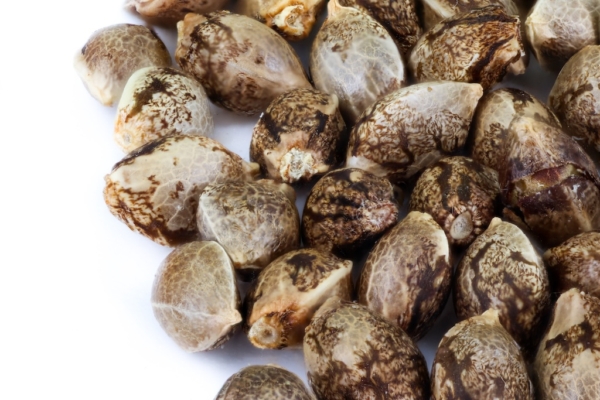
Choosing the right CBD seeds or cuttings is a crucial step in achieving successful cultivation. Key factors include the desired CBD content, growth conditions, and yield potential. Equally important, however, is a thorough understanding of the legal framework in your country. Before starting the cultivation process, it’s essential to research your local laws, as cannabis legislation varies significantly across Europe.
- Germany: CBD hemp cultivation is permitted only for commercial and scientific purposes, and the THC content must remain below 0.2%.
- Austria: Private cultivation is allowed as long as the THC level does not exceed 0.3%.
- Switzerland: The most liberal cannabis regulations in Europe allow cultivation with THC levels up to 1%.
TIP: Always opt for high-quality, certified CBD seeds from reputable suppliers to ensure legal compliance and superior yield quality.
SEEDS VS. CUTTINGS: WHICH ONE IS BETTER?
Deciding between CBD seeds and cuttings depends on individual goals, experience levels, and available resources. Each option comes with distinct advantages and disadvantages.
CBD Seeds: The Natural Choice for the Patient Gardener
CBD seeds are the traditional method for plant cultivation, offering greater genetic diversity. They are ideal for growers who want to witness every stage of development, from germination to flowering.
Advantages:
- Wide variety of strains with different CBD and THC levels
- Option to select feminized or autoflowering seeds
Disadvantages:
- Germination phase can be unreliable
- Longer time until harvest
TIP: Choose feminized CBD seeds to ensure only female plants grow, as these are the ones that produce flowers.
CBD Cuttings: The Shortcut to a Faster Harvest
CBD cuttings are clones of a mother plant, making them perfect for those who want to skip the germination process and guarantee genetic consistency.
Advantages:
- No germination risk – start with an already growing plant
- Consistent quality if the mother plant is robust
- Faster harvest compared to seeds
Disadvantages:
- Less genetic diversity
- More susceptible to stress and pests
LET’S GET THIS PARTY STARTED: GERMINATION PHASE OF CBD SEEDS
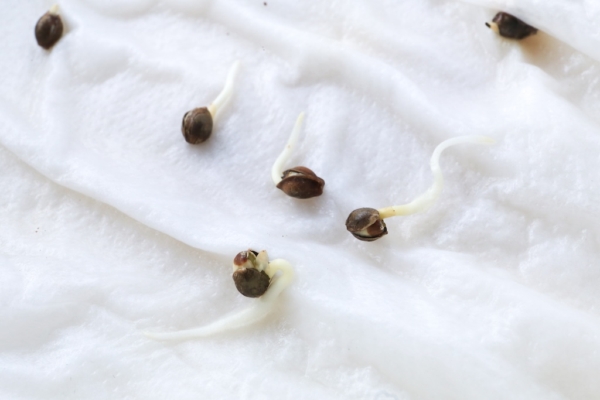
The germination phase is the starting point for CBD cultivation and plays a crucial role in the plant’s success. During this sensitive phase, the seed awakens to life and develops its first roots. The process typically takes 2 to 7 days and requires a warm, moist environment. A popular method is the “paper towel technique”:
- Place the CBD seeds between two damp, but not soaking, paper towels. Position them in a dark, warm place (ideally 20–25 °C/68–77 °F) and check the moisture regularly.
- Once the seed has developed a small root about 1–2 cm long, carefully transfer it into seedling soil. Cleanliness and patience are essential, as the roots are particularly delicate at this stage.
CHOOSING THE RIGHT SOIL FOR CBD SEEDS: FINDING THE PERFECT HOME
Long story short: Nutrient-rich and well-aerated soil are key factors for success. The choice of soil significantly impacts the healthy growth of CBD plants. The ideal soil is loose, well-aerated, and nutrient-rich with a slightly acidic pH value between 6.0 and 6.5. Specialized cannabis soil often contains the optimal mix of organic nutrients like worm humus, perlite for aeration, and coconut fibers for moisture regulation. Avoid heavily fertilized potting soils, as young plants are sensitive to excessive nutrients. Organic soil without chemical additives is an excellent option for natural growth. The right soil provides the foundation for strong roots, healthy growth, and a bountiful harvest.
BABY GROWING BIG: GUIDE TO GROWING CBD IN THE SEEDLING PHASE
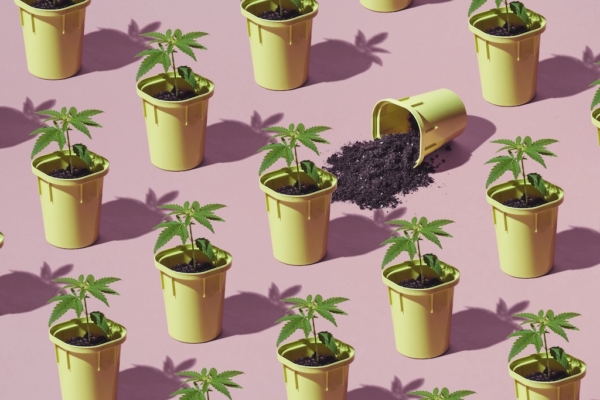
The seedling phase is arguably the most exciting stage in a CBD plant’s life, as it starts to grow and develop its first characteristic cannabis leaves. During this phase, creating the right conditions is essential for healthy development. CBD seedlings need plenty of light but also require gentle care. Ideally, the plants should receive 18–24 hours of light per day with moderate humidity of around 60%. Be cautious with water and nutrients, as too much of either can be harmful during this sensitive stage.
TIP: To reduce the risk of diseases like mold, it’s best to keep the seedlings in a small indoor greenhouse or under a mini greenhouse dome. If the lid becomes foggy, carefully open the ventilation slots to improve airflow.
Step 1: Monitor growth regularly and check moisture and temperature levels. If the soil starts to dry out, gently mist the plant with water using a spray bottle. This helps maintain humidity without causing waterlogging.
Step 2: Once the seedlings are growing well and consistently developing their five- to seven-fingered fan leaves, it’s time to transplant them into nutrient-rich soil. This supports root growth and gives the plant more space to spread out and grow strong.
THE GREAT OUTDOORS: TEMPERATURE FOR OUTDOOR GROWING AND TRANSPLANTING PLANTS
The right temperature is a critical factor for successful outdoor cultivation of CBD plants. Ideally, the surrounding temperature should be between 18 and 24°C (64–75°F) because CBD plants thrive best in mild, stable temperatures. Temperatures below 15°C (59°F) or above 30°C (86°F) can hinder growth and cause stress, which negatively affects the yield. Ensure your plants are protected from extreme weather conditions like frost or intense heat, especially in the early growth phases.
When it’s time to transplant your CBD plant, choose a moment when the outdoor temperature is stable and mild to provide the best growing conditions for the seedlings. When transplanting, carefully remove the plant from its original pot to avoid damaging the delicate roots and place it into a larger, nutrient-rich substrate. Make sure the new medium is well-ventilated and loose to ensure the roots have enough oxygen and room to spread out.
VEGETATIVE PHASE OF CBD SEEDS: GET INTO THE KNOWN
The vegetative phase forms the foundation for a healthy structure and strong roots. The following steps describe the process and optimal conditions for this growth period:
-
Start of the Vegetative Phase
The vegetative phase begins once the seedlings develop their first true leaves. This phase is marked by rapid growth and the increasing development of plant parts. The focus is on the formation of roots, stems, and leaves.
Optimal conditions:
- Temperature: 20–26°C (68–79°F)
- Humidity: 50–70%
- Lighting: 18 hours light, 6 hours darkness (for indoor growing)
-
Adjusting Nutrient Supply
During this growth phase, there is an increased need for nitrogen, as it is essential for leaf mass formation. Potassium and phosphorus are needed in moderate amounts to promote root development.
Fertilization steps:
- Start with a low concentration of nutrients.
- Gradually adjust nutrient levels as the plant progresses in growth.
- Avoid waterlogging and ensure the soil is well-aerated.
-
Promoting Growth Structure
To develop a strong plant, it’s important to support its growth actively. Techniques such as tying down shoots or gently bending them can optimize the structure, ensuring even light distribution.
Growth-promoting methods:
- Low-Stress Training (LST) to achieve a broad crown structure.
- Remove weak side shoots to focus energy on strong main stems.
-
Maintain Stable Environmental Conditions
During the vegetative phase, consistent environmental conditions are key. Fluctuations in temperature or humidity can affect growth or cause stress.
Control measures:
- Regularly check temperature and humidity levels.
- Ensure good air circulation to prevent mold.
- Leave enough space between plants for even light exposure.
-
Transition to the Flowering Phase
The vegetative phase ends when the plant is prepared for the flowering cycle. The transition is triggered by adjusting the light conditions (e.g., 12 hours of light and 12 hours of darkness for indoor growing). Outdoors, this transition is initiated by the natural shortening of the day length.
Signs the vegetative phase is over:
- Well-developed, strong side branches.
- Formation of pre-flowers at the nodes.
- Even leaf structure and a stable plant structure.
…and then comes the flowering phase.
FLOWERING PHASE OF CBD SEEDS: MASTERING THE BEST CBD FLOWERS
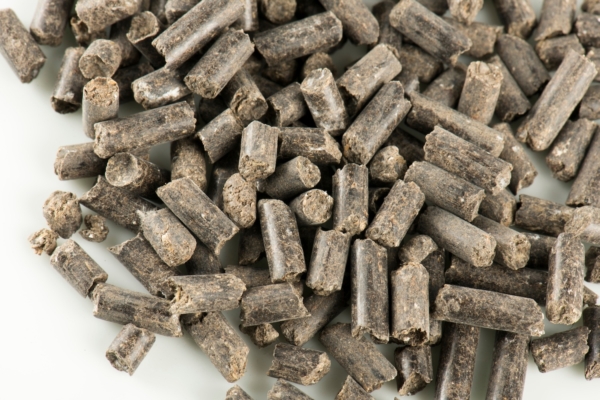
The flowering phase is the stage in the growth cycle of CBD plants where flower formation and the production of cannabinoids like CBD take center stage. The following steps outline the process of this phase and the optimal conditions for a successful outcome.
-
Initiating the Flowering Phase
The flowering phase begins when light conditions change or when the plant responds to the natural reduction in daylight. For indoor growing, this shift typically happens by adjusting to a 12/12 light cycle (12 hours of light, 12 hours of darkness).
Key Adjustments:
- Light cycle: Switch from 18/6 to 12/12 hours (for indoor growing)
- Temperature: 20–26°C (68–79°F) during the day, 16–18°C (61–64°F) at night
- Humidity: 40–50% to prevent mold
-
Early Flowering Phase (Pre-Flowering)
During the pre-flowering stage, the first pre-flowers develop at the nodes. This is when the plant’s sex becomes apparent: Female plants form small white hairs (stigmas), while male plants develop pollen sacs.
Observation Criteria:
- White stigmas appearing at the nodes (female)
- Recognize and remove pollen sacs (from unwanted male plants)
- Growth stops in the vegetative area, with focus shifting to flower development
-
Main Flowering Phase
In this phase, flower growth significantly increases, and the plant focuses its energy on resin and cannabinoid production. The flowers become denser, and the characteristic aroma from terpene production begins to develop.
Key Actions:
- Adjust nutrient supply: More phosphorus and potassium, less nitrogen
- Ensure good airflow to prevent mold
- Monitor leaves: Discoloration can indicate nutrient deficiencies
-
Late Flowering Phase (Maturation)
In the final stage, the flowers fully mature, and CBD production reaches its peak. Trichomes and stigmas give clues to the optimal harvest time.
Signs of Ripening:
- Trichomes: Changing from clear to milky white, some turning amber
- Stigmas: Changing color from white to brown-orange
- Resin production reaches its peak
The flowering phase marks the climax of the growth cycle and largely determines the quality and yield of the CBD harvest. Patience, precise observation, and adjusted care are key to achieving optimal results.
READY. STEADY. HARVESTING CBD PLANTS.
-
Determining the Right Harvest Time
- Observe the Flowering Phase: The flowering phase typically lasts between 8 and 12 weeks, depending on the strain. During this time, the flowers develop and eventually reach full maturity.
- Check the Trichomes: Trichomes are small resin glands found on the flowers and leaves of the plant. Over the course of the flowering period, their color changes. They start transparent, then turn milky white, and eventually amber. The ideal harvest time is when about 70–80% of the trichomes are milky, and the rest are amber, ensuring the CBD content is optimal.
- Color and Condition of the Flowers: The flowers should be fully developed and have reached their characteristic color (green or slightly purple). Yellow or brown spots may indicate over-ripeness or issues like pests.
-
Preparing for Harvest
- Harvest Tools: Sharp scissors or garden shears are necessary to cut the flowers cleanly without damaging the plant. Gloves are also recommended to avoid sticky resin on your hands.
- Optimal Harvest Conditions: Harvesting should be done in a dry, well-ventilated area to protect the plant from contamination and mold. Direct sunlight should be avoided to preserve valuable terpenes and cannabinoids.
-
Harvesting the Flowers and Seeds
- Cut the Flowers: The mature flowers should be carefully cut from the plant, with a focus on the flowers since they contain the highest CBD content. The stems can also be cut to make handling easier.
- Collect the Seeds: CBD seeds are ripe when they can be easily separated from the flowers and have turned a brownish color. The seeds should be firm, not brittle. Ripe seeds indicate a successful cultivation process.
-
Drying and Curing
- Drying the Flowers: Freshly cut flowers should be hung to dry in a cool, dark, and well-ventilated area. Ideal drying conditions are a temperature of around 18–22°C (64–72°F) and a humidity of 50–60%. This helps prevent mold and ensures even drying.
- Curing: After drying, the flowers should be stored in airtight containers, such as glass jars. During the 2–4 week curing phase, the flavors develop, and the CBD quality continues to improve.
-
Post-Harvest: Storing the CBD Seeds
- Storage of Seeds: CBD seeds should be stored in a cool, dry, and dark place to maintain their viability. An airtight container will protect the seeds from moisture and ensure their longevity.
By carefully observing the plant and timing the harvest precisely, you can achieve optimal CBD quality and a successful harvest. Every step contributes to securing the best yield and unlocking the full potential of the plant.
TIP: Harvesting should be done on a dry day with low humidity to avoid mold growth. After the harvest, slow and controlled drying is crucial, as quick drying can degrade the quality of the seeds and flowers
PROTECTING AGAINST PESTS AND PROPER FERTILIZATION IN CBD SEED CULTIVATION
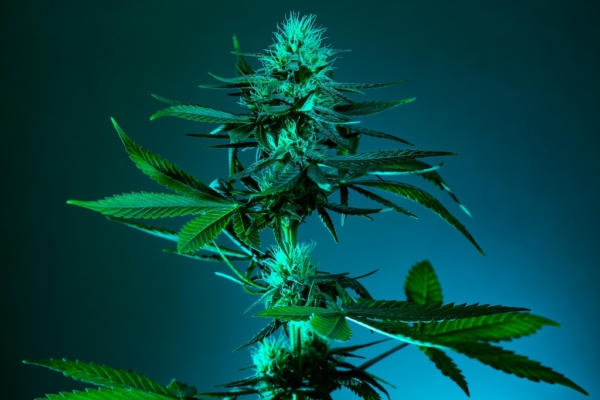
Pests like aphids, spider mites, and snails can pose a significant threat to the healthy growth of CBD plants. Using natural insecticides and encouraging beneficial insects such as ladybugs offers an effective way to combat pests. Regular plant inspections and a quick response to signs of infestation are essential to maintaining plant health.
Fertilization should be done with care to promote growth while avoiding nutrient deficiencies or excesses. During the vegetative phase, a nitrogen-rich fertilizer supports plant growth. Once the flowering phase begins, the focus should shift to phosphorus and potassium to promote flower development. Organic fertilizers or cannabis-specific fertilizers provide gentle and sustainable nutrient support. A balanced fertilization system ensures that CBD plants develop healthy roots, robust growth, and a high-quality harvest.
Proper Fertilization is Key for Healthy Growth
Too high or too low a nutrient intake can affect growth and reduce the quality of the harvest. Here’s a step-by-step guide on how and when to fertilize CBD seeds properly:
- Choosing the Right Fertilizer
For CBD plant cultivation, organic fertilizers or cannabis-specific fertilizers are recommended. These provide the essential macro and micronutrients required for healthy plant development without the risk of chemical residues. During the vegetative phase, a fertilizer with a higher nitrogen content is necessary, while during the flowering phase, the focus should be on phosphorus and potassium - Fertilizing During the Vegetative Phase (Growth Phase)
- When to Fertilize: During the vegetative phase, fertilize the plants every 2–3 weeks when the first true leaves appear, and growth becomes noticeable.
- How Much to Fertilize: Start with a low concentration of fertilizer, gradually increasing it as the plants show signs of nutrient needs. Too much fertilizer can damage the roots.
- Mixing Water and Fertilizer: Always mix the fertilizer with water and water the plants evenly. Make sure the soil is moist but not overly wet.
- Fertilizing During the Flowering Phase
- When to Fertilize: Once the plants start flowering (typically after 4–6 weeks), the nitrogen requirement decreases, and it’s time to switch to a phosphorus-rich fertilizer. Fertilize every 2–3 weeks.
- How Much to Fertilize: Reduce the amount of fertilizer compared to the vegetative phase, as too much nitrogen during flowering may promote leaf growth instead of flowers.
- Time Between Fertilizer Applications
Allow enough time between fertilizer applications for the plants to absorb the nutrients. This enables the roots to fully take in the available nutrients, preventing nutrient buildup in the soil. If the substrate is still sufficiently moist, avoid fertilizing or watering again.
- Avoid Overfertilization
Be cautious not to overfertilize the plants, as this can lead to “nutrient burn.” Common signs of overfertilization include brown or yellow leaf tips. In this case, reduce the amount of fertilizer and water the plants more to flush out excess nutrients.
- Fertilizing with Organic Fertilizer
Organic fertilizers, such as worm humus or compost, provide a sustainable alternative and supply the plants with nutrients slowly and evenly. These should be applied at the beginning of the growth phase and refreshed every 3–4 weeks as needed.
COMMON ISSUES IN CBD SEED CULTIVATION AND EFFECTIVE SOLUTIONS
Some of the most common problems in hemp cultivation include mold, pest infestations, nutrient deficiencies, and unfavorable environmental conditions.
- Mold: Often caused by high humidity and poor air circulation. A well-calibrated ventilation system and maintaining a humidity level of about 50% during flowering can help prevent mold.
- Pests: Spider mites and thrips can be controlled with natural beneficial insects like ladybugs or neem oil.
- Nutrient Deficiencies: Nitrogen or potassium deficiencies manifest as discolored or deformed leaves. A balanced, phase-specific nutrient plan will address these issues.
- Environmental Conditions: Stable temperatures between 20–26°C (68–78°F) and controlled watering are crucial to avoid root rot and growth problems.
So don’t shy away—let the good things grow!
